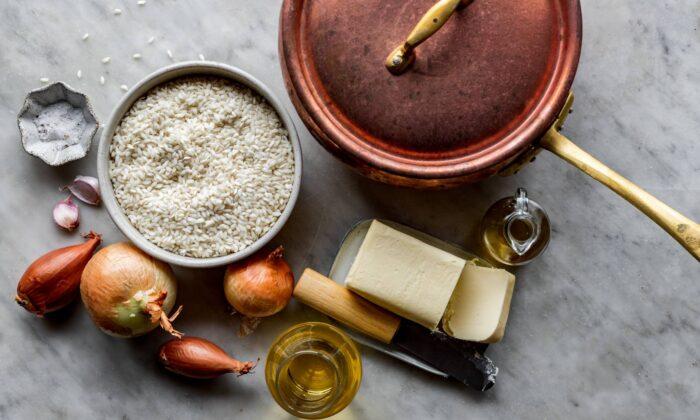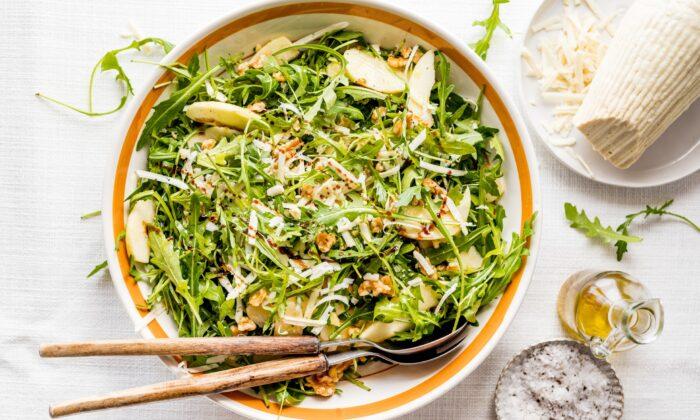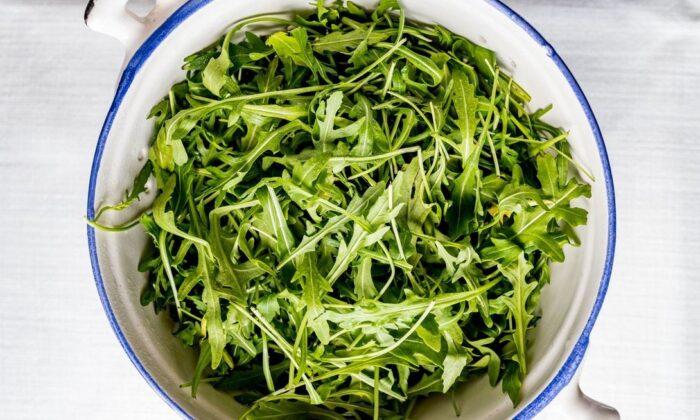Risotto is one of the most classic, comforting, and recognizable recipes of the Italian culinary tradition. It finds its home in Italy’s northern regions, such as Piedmont, Lombardy, and Veneto, traditionally dedicated to growing rice.
Risotto is one of those dishes that is usually considered part of a Sunday meal, a rich and celebratory food. Though it is simple, it requires care and attention in the making.
3 Important Moments
The universally recognized characteristic of risotto is the step of coddling it on the stove. To make a risotto, you have to stand by the stove, gradually adding stock to the rice and constantly stirring, to coax it into the perfect creamy texture. It is time-consuming, a labor of love, but worth every single minute.Tostare
To begin a risotto, you usually start with aromatics, such as onions, or in more modern renditions, scallions, for a subtler taste. Finely mince them and sautée in butter, or olive oil, depending on where you are in Italy (northern versus central and southern, respectively), or your liking.When the onions are golden, stir in the uncooked rice to toast it—or tostare, in Italian. Toasting the rice is important because it seals the grain, ensuring that it releases the right amount of starch when it cooks, which will give the risotto its creamy texture.
Let the rice toast over medium-low heat, continuously stirring with a wooden spoon, until it is translucent, almost pearly. If you listen carefully, you will hear the rice crackling, almost imperceptibly, when it’s ready.
Sfumare
After you have toasted the rice, you usually add half a cup of wine. Sfumare refers to the process of adding the wine and reducing it.Traditionally, red wine was used. In Piedmont, for example, one of the northern Italian regions where risotto culture was born, cooks would add local wines such as dolcetto, nebbiolo, Barolo, or Barbaresco, resulting in a rich, deeply flavored risotto. Later, to adapt to changing tastes, dry whites became the wine of choice for risotto, to give it a more delicate flavor.
In more recent years, it’s also become fashionable to use champagne, or Italy’s local sparkling wine, spumante. The carbonation helps give the risotto a soft and creamy texture, even without the final step of stirring in the butter.
Mantecare
This is the final step in the making of risotto, when you remove the pot from the heat and add butter, and often some grated Parmigiano Reggiano or Grana Padano. The Italian word mantecare comes from the Spanish word mantequilla, butter, and it means to cream the risotto with butter and cheese, giving it its characteristic velvety texture.2 Essential Ingredients
Fat
Nowadays, rice is usually toasted in butter to make risotto. This is common in the North of Italy, where risotto is from. In other parts of Italy, such as in Tuscany, famed for its olive groves, you’ll more likely find extra-virgin olive oil as the cooking fat of choice.Rice
Several Italian varieties of rice are suitable for making risotto. They all typically have round, plump grains with absorbent qualities, so that they soak up the flavor of the fat, stock, and other ingredients while cooking.Arborio is the most common rice in Italy, and the easiest to find in North America. It has very large grains that hold up well to cooking.
Carnaroli is considered the king of Italian rice. It has a higher starch content than arborio, and a good balance between its ability to absorb fat and its ability to release starch during cooking, both key qualities for making a creamy, flavorful risotto.
Vialone nano, a variety from Italy’s northeastern Veneto region, is appreciated for its versatility, though an especially excellent choice to make risotto with vegetables. Roma, with its large, full-bodied grains, is perfect for all types of risotto.





